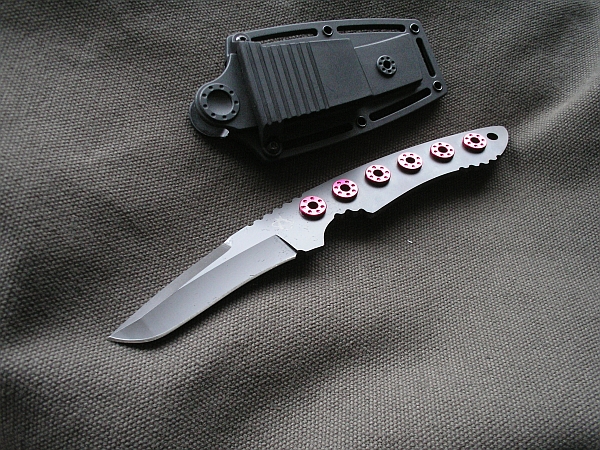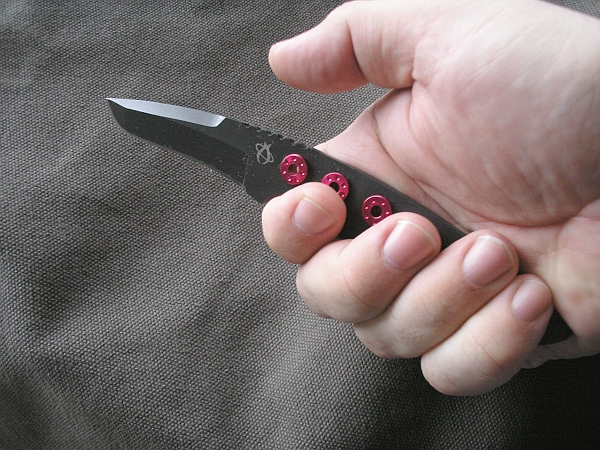Mantis Knives MF2 and MF3
Review by Phil Elmore
It was in early 2007 when The Martialist first took note of Mantis Knives, a brand that seemed to appear out of nowhere in dealer catalogs and knife magazine advertisements. Contacting a real, live human being through the company's website proved surprisingly easy. We are therefore happy, after a year of living and working with these knives, to present long-term reviews of this company's blades.
 According to Jared West, owner of Mantis Knives, the company was
founded in late 2005 and debuted at the 2006 SHOT Show. "The
Mantis Logo came to me before the name did," Jared told me. "I
was sitting in an International Business class at the Hilton Business
School at L.M.U. in 2001. I was taking notes, and this logo just
hit me, so I scribbled it down. I revised it a couple of
times. Now it's the logo that you see on every Mantis Knives box
that ships out of our Anaheim Hills headquarters."
According to Jared West, owner of Mantis Knives, the company was
founded in late 2005 and debuted at the 2006 SHOT Show. "The
Mantis Logo came to me before the name did," Jared told me. "I
was sitting in an International Business class at the Hilton Business
School at L.M.U. in 2001. I was taking notes, and this logo just
hit me, so I scribbled it down. I revised it a couple of
times. Now it's the logo that you see on every Mantis Knives box
that ships out of our Anaheim Hills headquarters."
That headquarters is a 10,000 square foot facility in Orange County,
California. Some of the knives in the Mantis line are made in the
United States, while others are assembled in Taiwan from US-made
materials (sent by Mantis from Crucible and other sources). The
result is a line of affordable knives of decent quality for the money,
including the only brand of knives officially sanctioned by the United
States Catfish Anglers Tournament Series. "We're the only company
they endorse," Jared states. "We're [also] the only knife
company in the world to offer S30V stainless steel on a folder for less
than $100.00 [USD]."
Jared carries his own company's MK1 model when "hucking boxes and
working in the shop or warehouse." While out on the town, dressed
nicely, or in formal meetings, he carries "my MT2SC. It's slim,
lightweight, and elegant." Price, performance, and style are what
set his company apart from others, according to Jared. "Put our
knives to the test," he urges. "They endure. Every Mantis
knife has a unique, post-modern, industrial look to it. Ever
since I was young, I've been into strange angles and structures in
architecture and design. If I were to design a building, it would
look an awful lot like the Getty Center in Los Angels, or maybe even
the Walt Disny Concert Hall."
At just 27 years old, Jared is a young entrepreneur who seems eager to take on a competitive and often politically charged industry. Mantis' blade materials range from stainless steels like 420HC to more rugged alloys like BG42 and 154CM. Handle materials also range from unusual metal designs to more conventional G10 and carbon fiber slabs.
The Mantis MF2 and MF3 are low-profile fixed blades that feature all-metal construction. Each has a blade just under three inches and an overall length just over seven inches. The blades are 420HC steel, while the handles consist of the same piece of stock with red, textured rivets attached through them.
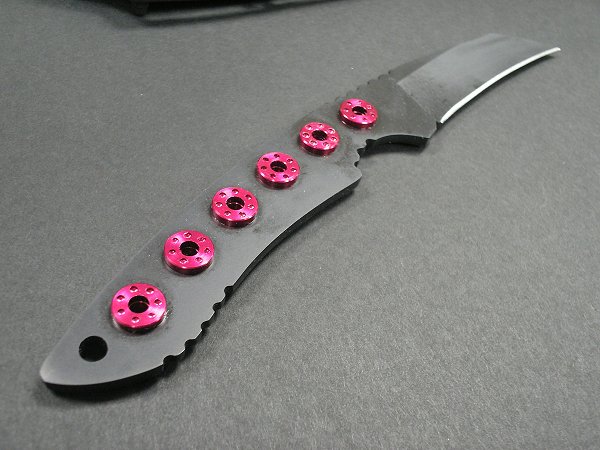
Thoughtful grooving at the back of the grip and at an index finger
contour (forming an integral guard, almost) works with the rivets to
ensure a good, firm grip, though some with large hands may find the
tapered butts of the knives a little pointy. My mitts are large
enough that the rear of the knives poked me a little; it was not a big
problem.
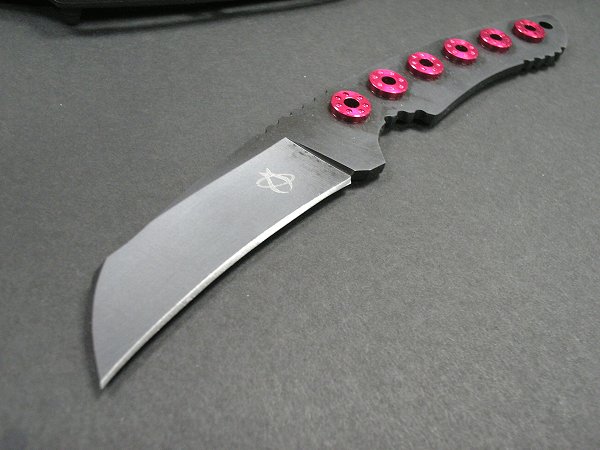
The MF2 has a hawkbill blade, while the MF3 has a recurved edge that tapers to an upswept drop point. Both penetrate well and were nice and sharp out of the box, though of course the hawkbill prompts the user to make a sort of jabbing, hooking push when attempting a thrust. The point of the MF3 is more natural for thrusting.
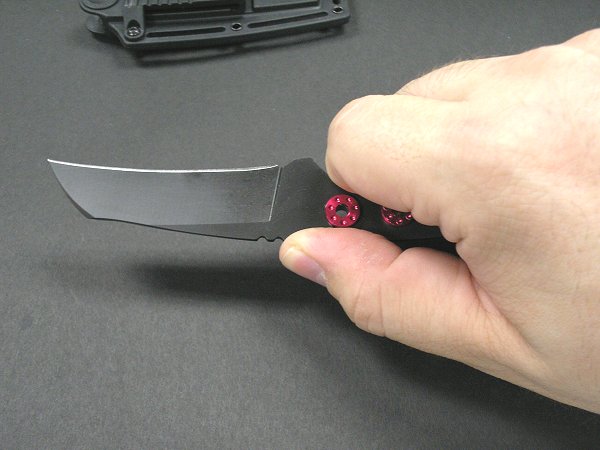
Each of these knives comes with a plastic sheath. The blades lock positively in place and are held by friction. A plastic tab screwed onto the rear of each sheath forms a belt clip, enabling the user to wear the knife inside the waistband (IWB). Be warned; to do this, your belt must be slim enough to permit it, as the belt hook is not very wide.
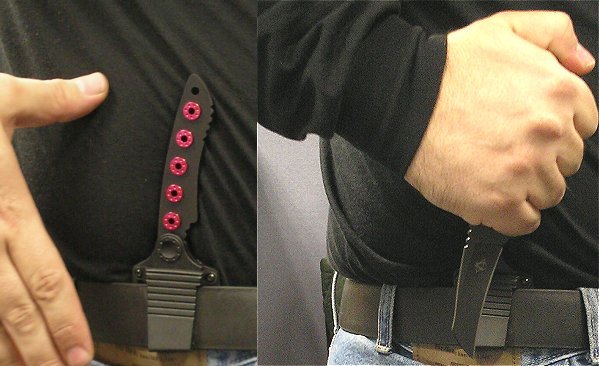
It's hard not to execute an all-steel with reasonable fit and finish. These knives are no exception. They exhibit good quality and the grinds (on both sides of the blades) are decently performed. The hawkbill blade was particularly sharp out of the box, though both were, as I said, quite good. Both knives performed well cutting a variety of test media, ranging from stacked cardboard to hanging plastic.
The MF2 and MF3 are obviously intended as low-profile self-defense blades, rather than as field or utility tools. The inclusion of the IWB sheaths clinches this, and I have to say that either of these knives would make a good daily self-defense companion. They're slim, lightweight, and simple, which is what you want in such a blade.
You could carry either one of these to fill that role, and you could do it confidently. >>
